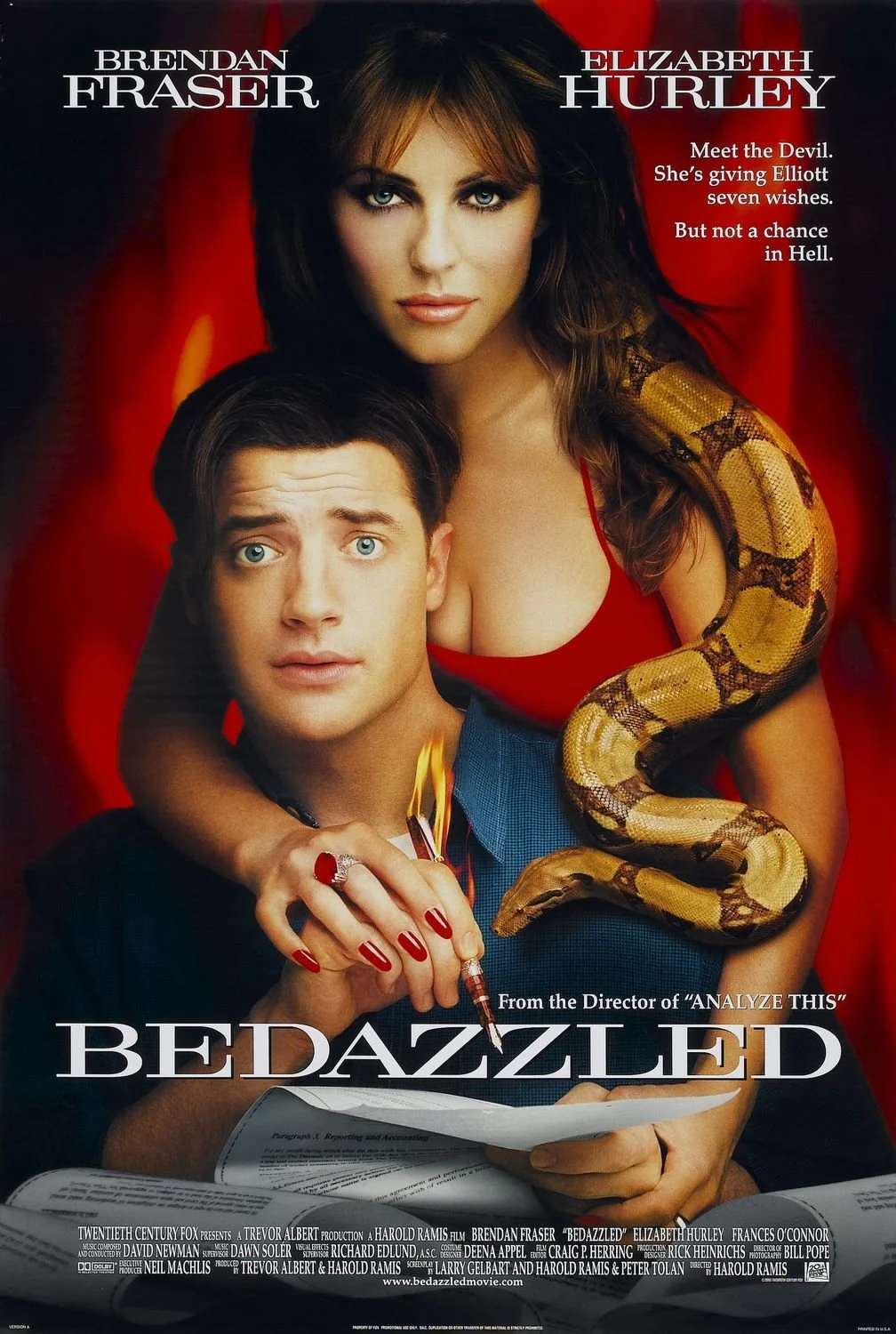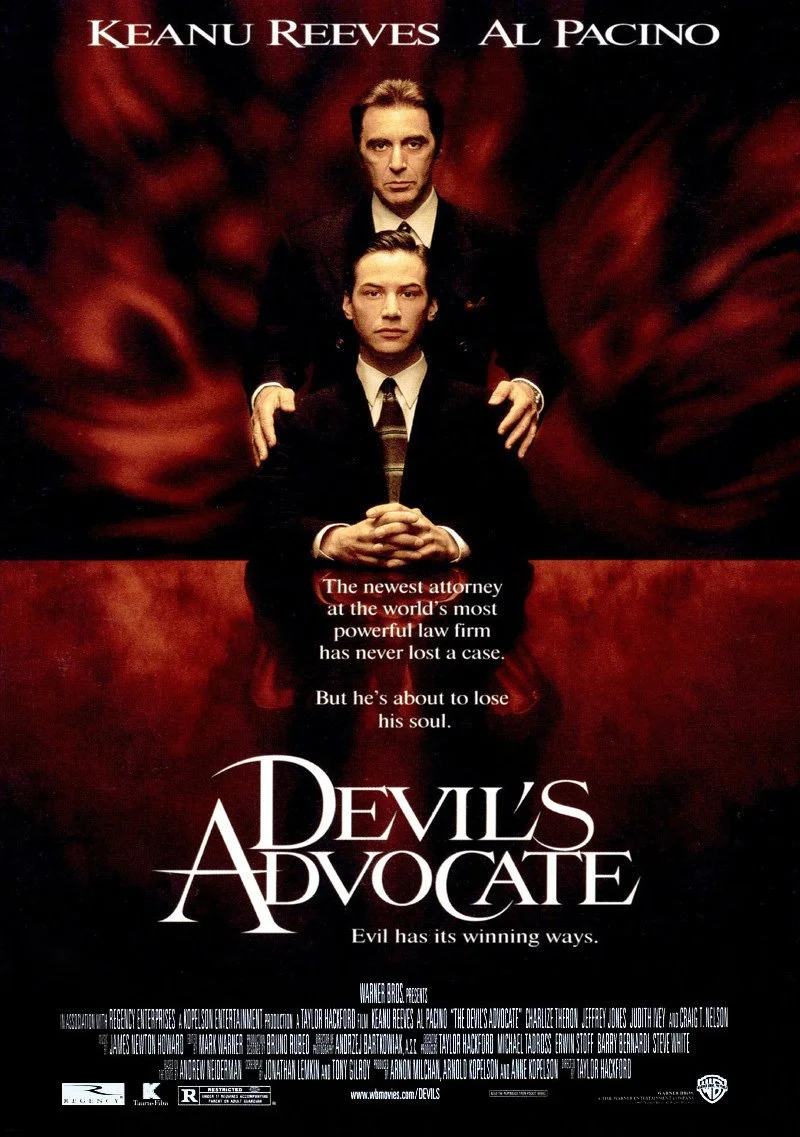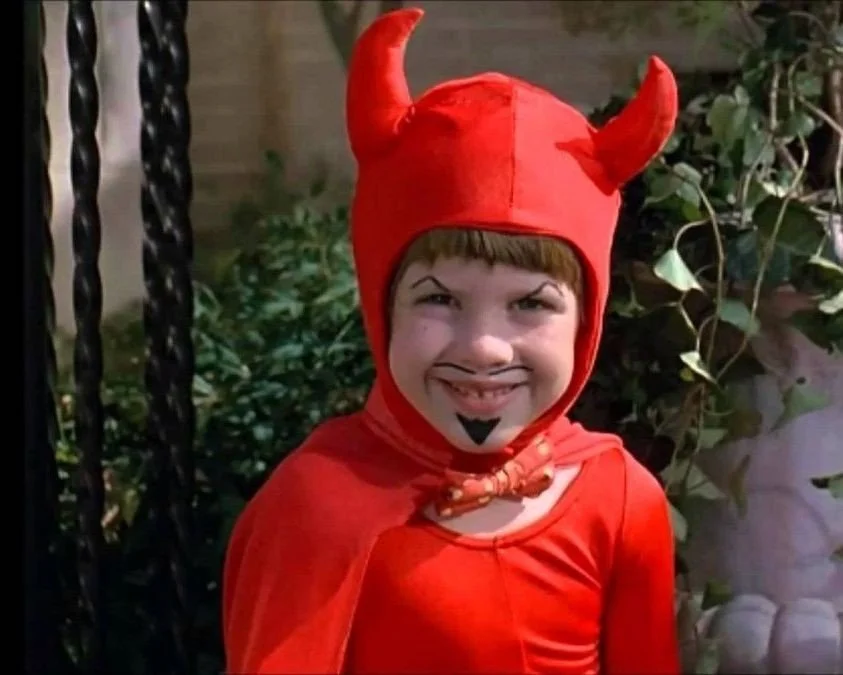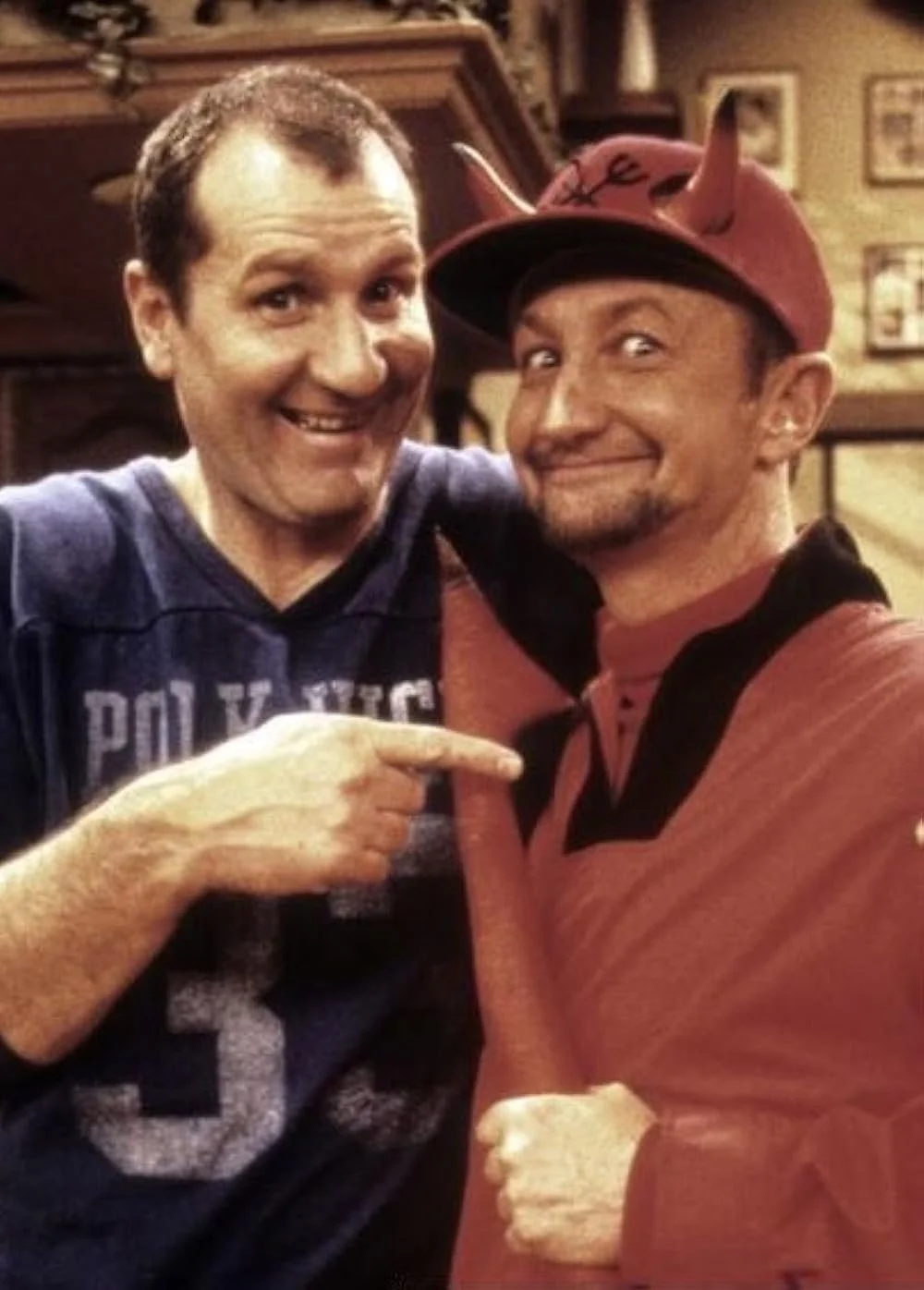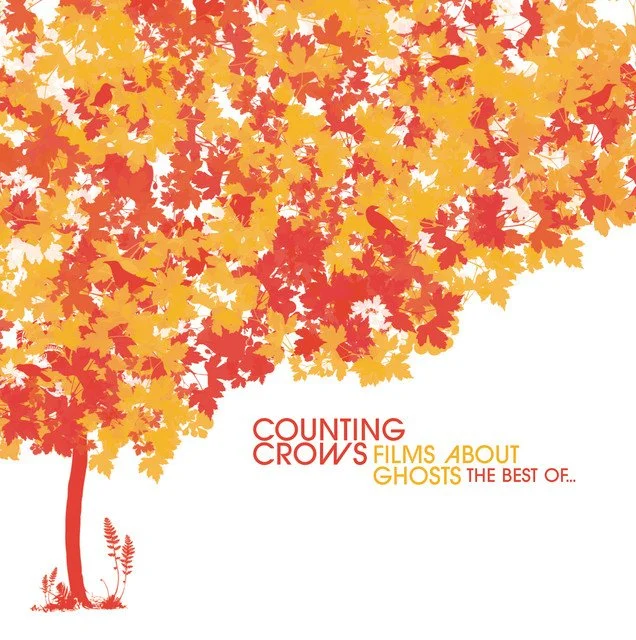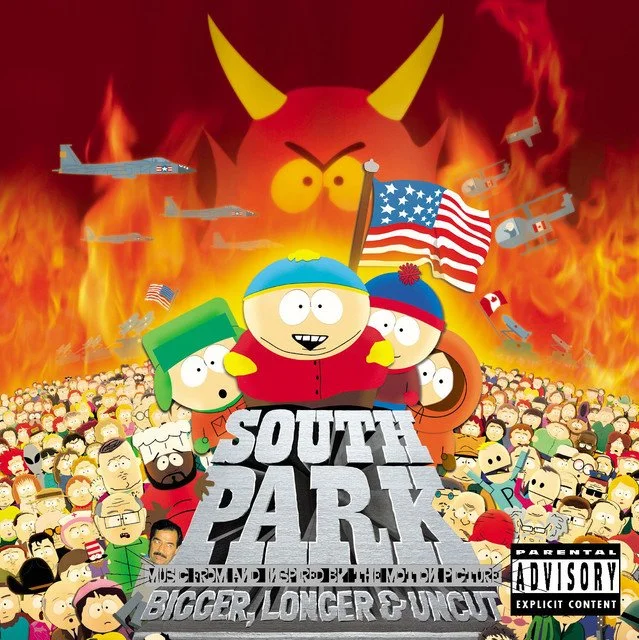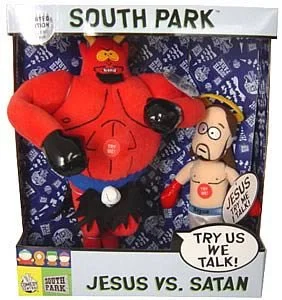Thoughts on The Devil
DEFINITION
in Abrahamic belief Systems, "the devil" is defined as the chief evil spirit; satan. The tempter of humankind and ruler of The Underworld.
“If it wasn’t for the devil we wouldn’t be here, would we?”
FILM & TELEVISION
As a child, I was beyond horrified by the prospective existence of supernatural evil. Demonic activity was my boogieman. And yet, The Devil himself never phased me. To be honest, I kind of liked the idea of him—a scorned vengeful soul who wanted me arguably more than God did, who would go to any length to lure me beneath his wing. It’s not that I felt seduced by The Devil or even sorry for him. I simply admired the grandeur of his moxie, the candidness of his antagonism. After all, who else in my life was pointing towards closeted desires and progressive beliefs, saying, “At least try it before you knock it”? Perhaps my fear of demons and lack of fear for The Devil was a direct result of Hollywood, that glamorous machine that never failed to paint The Devil as approachable yet uncatchable. Hollywood humanized The Devil in a way that made him a leading man. A movie star.
According to Christian belief systems, Lucifer was an angel of God who grew prideful and dissatisfied with his status as God’s servant. His selfish ambition was the catalyst of a divine war between the angels, resulting in Lucifer’s defeat and inevitable fall from Heaven. But The Morning Star did not fall alone; all of his allies—“a third of the stars”—were banished with him, colonizing what would become Satan’s new home and ultimate domain: Hell.
Understand: Lucifer is Christianity’s version of Satan. Other religions have their version of the chief evil spirit and Hell, but specifics differ. In fact, the reason we have so many synonyms for Satan (Morning Star, Lucifer, Beelzebub, Beelzebul, Devil) is that the Old Testament was translated into Latin from the Hebrew Bible, but scholars used the Septuagint—the Greek translation—to do it. Why? Back then, most non-Jewish Christians could not read Hebrew.
LANGUAGE
“Handsome as the devil,” my grandma would say when referring to an attractive man. I adored this descriptor; it never failed to pique my interest even more, as if the comparison to the devil made the person more mysterious, more alluring. Hotter. No pun intended.
Consider adding these devilish idioms and proverbs to your mother tongue:
“Dance with the devil”: To engage in risky, often unscrupulous behavior.
“The devil is in the details”: Plans, actions, or situations that seem sound must be carefully examined, because minor details can end up causing major, unforeseen problems.
“Between the devil and the deep blue sea”: Facing two equally unpleasant, dangerous, or risky alternatives.
“Playing devil’s advocate”: One who argues against or attacks an idea, argument, or proposition—even if one is in favor of it—for the sake of debate.
“Better the devil you know than the devil you don't”: When faced with two options, it is better to choose the more familiar one, even if it is undesirable.
“Speak of the devil, and he shall appear”: An acknowledgment of a person who has arrived just as or after they were being discussed.
“Idle hands are the devil's workshop”: When one is unoccupied or has nothing to do, one is more likely to cause or get into trouble.
“The devil is beating his wife”: It is raining while the sun is shining. "The devil is meeting his wife" is also used.
“Giving the devil his due”: To acknowledge the positive qualities of a person who is unpleasant or disliked.
In the mid-16th century, the idea of The Devil as a physical being capable of materializing became more real to people due to the growing popularity of demonology. Most of the physical features we associate with The Devil developed in the medieval era as more members of the clergy feared that evil stalked the Earth and walked among us. Before this, artistic depictions of The Devil mostly revolve around dragon or beast-like features. The Devil in human form was predominantly shaped by St Augustine’s idea that interactions between demons and humans were based on a contract—an idea that paved the way for a more “humanoid” version we see in pop culture today. In retrospect, God didn’t make The Devil relatable; we did.
FAMOUS PORTRAYALS OF THE DEVIL
Surely The Devil is at the top of any actor’s list of dream roles. He has a tragic backstory, a clear objective, a slew of obstacles, high stakes, and an impressive emotional range. The Devil is the ultimate underdog story. Though not technically The Devil, my favorite on-screen portrayal of supreme evil is Darkness played Tim Curry in Legend (1985). The make-up, the voice, the masterful acting stylization—you couldn’t ask for a better “traditional” portrayal. If you ever find yourself with a free afternoon and nothing to do, hop on YouTube and seek out clips of actors portraying their interpretations of the ultimate fallen angel. And on that note, can we get a diversity committee to oversee any and all future casting of the devil, please? Where my ladies at?
A Few Celebrities Who Have Played the Devil
Bryan Cranston (Fallen)
Robert Di Niro (Fallen Angel)
Gabriel Byrne (End of Days)
Jeff Goldblum (Mr. Frost)
Dave Grohl (Tenacious D: The Pick of Destiny)
George Burns (Oh God, You Devil)
Jason Sudeikis (Saturday Night Live)
Al Pacino (The Devil’s Advocate)
Gwendoline Christie (The Sandman)
Tom Waits (The Imaginarium of Dr. Parnassus)
Leslie Bibb (God’s Favorite Idiot)
Peter Cook (Bedazzled, 1967)
Elizabeth Hurley (Bedazzled, 2000)
Billy Crystal (Deconstructing Harry)
Danny Elfman (Forbidden Zone)
Robert Englund (Married . . . with Children)
The Disturbing Truth Of The Seven Princes Of Hell
Though Lucifer is the most well-known, literature tells us there are seven princes of Hell. In the late 16th century, demonology gained popularity as an academic field of study. In 1589, Peter Binsfeld, a German theologian and prominent witch-hunter of his time, published a book that would go on to be one of the leading handbooks in the identification and combating of witchcraft, including a classification of demons. According to Binsfeld, each prince was assigned a sin to reign over: pride, greed, wrath, envy, lust, gluttony, and sloth. However, the concept of the seven deadly sins was penned centuries before Binsfeld’s publication, creating a (convenient) structure for his “seven princes of hell” claims.
Short Story
One of the first short stories that ever truly haunted me was Joyce Carol Oates’ “Where Are You Going, Where Have You Been” due to its disturbing depiction of male predatory behavior. Though Oates insists the story came to her after reading a Life Magazine article on murderer Charles Schmid, many believe the story is an allegory for coming-of-age sexuality in which the disturbing antagonist, Arnold Friend, is The Devil.
If you like stories that feature demons and devils, you’ll love these:
“Orange World” by Karen Russell
“My Father, the Morning Star” by Rita Chang-Eppig
“The Smith and the Devil” by Giambattista Basile, adapted by The Brothers Grimm (There’s a pretty good adaptation on Netflix called Errementari—check it out!)
“Where Are You Going, Where have You Been?” by Joyce Carol Oates
“The Yattering and Jack” by Clive Barker
“Other People” by Neil Gaiman
“That Hell-Bound Train” by Robert Bloch
“The Price” by Neil Gaiman
“Satanic panic” was an American cultural phenomenon that started in the 80s, eventually sweeping the globe by the late 90s. Given the popularity of satanic horror films throughout the 70s and early 80s (Rosemary’s Baby, The Exorcist, The Omen), along with a slew of premeditated murders and serial killings that shook the nation (Charles Manson, Ted Bundy, Son of Sam), it makes sense that the American public started forming their own lens on Supreme Evil’s existance and manifestation in the real world. A popular book, Michelle Remembers, was a catalyst for Satanic panic. After its publication in 1980, allegations of Satanic rituals and occult activity began popping up in the news—kidnappings, human sacrifice, torture, sexual abuse. But where was the evidence? And if there was evidence, was a real or fabricated? Moral panic tends to snowball its way into American culture every few decades (Salem Witch Trials, "the Devil’s music”, the Red Scare, razors in Halloween candy), with pop culture acting as a precursor to that hysteria. Art is a reflection of society. We don’t fear society until art shows us what to fear.
Poetry
Many scholars consider Paradise Lost to be one of the greatest poems in English literature, a work that explores Lucifer as a fallen angel who conspires to corrupt God’s latest and most favorite creation: man.
“Paradise Lost: God vs. Satan in Milton's Epic Poem” by Great Books Prof
Click HERE to read one of my all-time favorite poems, “Satan Says” by Sharon Olds.
This rare first edition and signed copy of Sharon Old’s debut collection, Satan Says, can be yours for $900.00.
Satanism is misunderstood; anyone who has bothered to look into it can understand that. The Satanic Temple’s core values focus on compassion, intellectualism, and personal freedoms. Satanists do not worship the devil. They use him as a metaphor: the rebel spirit. The ultimate champion of free will.
Over the last two years, the Satanic Temple and the ACLU have filed suits against several school districts for barring After School Satan Club, a elementary school program that has repeatedly been denied access to hosting meetings on school property. If Christian-based clubs can utilize facilities, why not other religions?
Before you say, “Because they’re teaching kids about Satan,” go read their mission statement on the Satanic Temple website. The club is a “safe and inclusive” space for alternative thinkers, focusing on “science, critical thinking, creative arts, and good works for the community.”
DANCE
Some cultures “dance with devils” as a way to manifest cultural forces and honor their god(s). Some cultures use a girl dancing with The Devil as an urban legend—a scare tactic to lure women away from the temptations of sex, drinking. and partying. In fact, there are more than 200 versions of “the girl who danced with The Devil” legend, far too many to narrow down for this post.
But I don’t want to talk about that. What I want to talk about is the sequel to Saturday Night Fever.
People can hate all they want, but I refuse to be robbed of my love for elaborate 80s dance numbers. The grandiose, over-the-top finale of Staying Alive (1983), choreographed by Dennon and Sayhber Rawles, carries so much unabashed sexual seriousness that it surpasses cheesy and slams right into glorious. It tells the story of a man (a sweaty, leaping, washboard-ab-toting John Travolta) who journeys through Hell in order to ascend towards redemption (however that works??). The point is: Staying Alive walked so Showgirls could run, and don’t you forget it. So many thongs. So many kicks.
“The devil can cite scripture for his purpose.”
THEATRE
The first stage play I can remember seeing was J.B.—a modern retelling of the Biblical story of Job. I was young enough to not understand what the fuck was going on, but old enough to know, “Ok, that character represents God, and that character represents The Devil,” which tells me that these two archetypes were so engrained in my head from an early age, it was impossible for me to not recognize them (even when they were disguised as circus venders in a play). In truth, I’ve never met a biblical-based play I didn’t like: Godspell, God’s Favorite, Salome, Jesus Christ Superstar— To this day, I find myself drawn to modern adaptations of Biblical stories, wishing there was an easy way to track newer works that meet such criteria.
Arguably the most well-known appearance of The Devil in theatre is Mephistopheles in the many, many adaptations and translations of the story of Dr. Faust.
Here is a fantastic monologue from Conor McPherson’s The Seafarer—a play about how the past will always come back to haunt us, and in this case, in the form of a Mephistophelian character named Mr. Lockhart.
“Of all the spirits that deny,
The Rogue (Devil) is to me least burdensome,
Man’s activity too easily run slack,
He loves to sink into unlimited repose
And so I am glad to give him,
A companion like the Devil, who excites,
And works and goads him on to create.”
Goethe’s Faust, translation unknown
Mr. Lockhart from Conor McPherson’s The Seafarer.
In 2021, Nike collaborated with rapper Lil Nas X and a Brooklyn-based art collective to design and release “Satan Shoes,” a black Nike Air Max 97 featuring a bronze pentagram, an inverted cross, and 1 drop of human blood. Only 666 pairs were produced, retailing for $1,018 each. The limited supply sold out in under a minute.
MUSIC
Pop music is a vehicle for seduction—it pulls us in and implants itself into our minds. It dares us to dance, to move our bodies in suggestive ways. To ask for more. Sound like someone we know? It’s only natural that early 20th-century fundamentalist Christians viewed blues music—the birth of rock n roll—as the devil’s music. Repetition plays a key role in its rhythms and lyrics—chant-like mantras often laced with double entendre and hard-won wisdom. Truth is, “The Devil’s music” was a racist label. Need more proof? Look no further than the legend of American blues musician Robert Johnson, who was rumored to have “sold his soul” in exchange for mastering the guitar. If you’ve never heard the legend, you can read about it here. But make no mistake: anytime you hear the expression, “rock n roll is the devil’s music,” what you are hearing isn’t an outdated conservative attitude. It is racism disguised as a conservative attitude.
Here’s a short playlist of songs that personify of The Devil:
Devil with the Blue Dress On by Mitch Ryder and The Detroit Wheelers
Lucifer by JAY-Z
Tribute by Tenacious D
Devil Inside by INXS
Friend of the Devil by Counting Crows
Up There by Trey Parker (South Park: Bigger Longer and Uncut)
The Devil Went Down to Georgia by The Charlie Daniels Band
Don’t Let the Devil by Killer Mike
Devil in a New Dress by Kanye West
The Devil Wears a Suit by Kate Miller-Heidke
“Not that I relate to the devil in his evilness, but I relate to the devil as a character seeking forgiveness in some way.”
ART
There is something haunting yet comforting about visual depictions of religious figures. I don’t want to brag, but I have more Virgin Mary paraphernalia in my house than most Catholic Churches have in their gift shops. I collect statues, holy cards, rosaries, velvet paintings, illustrated Bibles, crucifixes, books on saints— For a heathen, I am impressively stocked up in the “emergency exorcism” department. But there is one religious figure I’m hesitant to welcome into the eclectic fray of my home decor: The Devil. If I claim to believe that all these religious trinkets and figurines I have collected over the years are merely tokens—that their power lies more in their romanticism than their myths—why is it still so hard for me to include The Devil in the mix?
Nick Cave: The Devil Figurines
When it comes to art, there are only two depictions of The Devil I want in my possession:
1) The “Jesus vs Satan” plush doll boxed set from South Park
2) Nick Cave’s 17-piece ceramic series entitled The Devil - A Life, a collection of hand-sculpted, hand-painted figurines that tell the story of The Devil from birth to death. Think “kitschy Dutch Stations of the Cross, but The Devil”.
SatanCon is (or was) a thing. The first convention was hosted in Arizona in 2022 with the following year in Boston. SatanCon 2024 was cancelled. Why? Most likely a combination of antagonistic forces. Christian protestors. Lack of funding and support. Difficulty securing a location. We can only guess. Wanna see pictures?
EDUCATION
Truth is, when it comes to The Devil, there is simply too much to unpack. Every religion has its version of the supreme evil and most of what we know of The Devil exists in a rolling stew of speculation and imagination with no foundation in proven fact. The King James Bible is over 783,000 words and The Devil is referenced approximately 54 times, sometimes as Satan, sometimes not. What we assume of The Devil predominantly comes from one key source: Art. Literature, paintings, songs, folktales—all these things are what have shaped our beliefs and perceptions of what is or what is not supreme evil. For a brief history of The Devil, check out the video below.
“May your glass be ever full. May the roof over your head be always strong. And may you be in heaven half an hour before the devil knows you’re dead.”


